In Norse mythology, where gods and giants battle for supremacy, the figure of Hel stands out as a unique and enigmatic deity. As the ruler of the underworld, Hel has been the subject of intrigue and mystery for centuries. She is the daughter of the trickster god Loki and the giantess Angrboða, which immediately places her within a complex family dynamic that intertwines gods, giants, and the forces of nature. But who is Hel, and what role does she play in the broader narrative of life, death, and the afterlife?
The Origins of Hel
Hel’s birth was marked by unusual and foreboding circumstances. Unlike other gods, who were often born into the realms of the living or the divine, Hel’s very appearance revealed her dominion over death. According to myth, Hel’s body was split down the middle: one half was the pale color of death, while the other was healthy and alive, symbolizing the delicate balance between life and death that she governs. Her striking appearance immediately made her an ominous figure, feared by mortals and gods alike.
Her parentage, too, set the stage for her complex character. Loki, known for his mischievous and often malevolent deeds, was a god of chaos and transformation, while Angrboða, a giantess, belonged to a race of beings often seen as enemies of the gods. Hel, therefore, straddles both the divine and the monstrous, making her a figure that embodies both the divine order and the chaotic forces of nature.
Helheim
Helheim is often described in stark, chilling terms: a place of darkness, cold, and mist. In contrast to the fire and brimstone associated with many other mythological afterlives, Helheim is characterized by its stillness and ice. It is a realm that exists beneath the roots of Yggdrasil, the World Tree, a symbol of the interconnectedness of all realms in Norse mythology. This location underlines the inevitability of death, as Yggdrasil connects all worlds, and thus, death is an inherent part of the cosmic order.
Despite its bleak description, Helheim is not a place of suffering or torment. Souls here are not punished but are simply in a state of limbo, waiting for the end of time. This peaceful yet uninspiring existence contrasts sharply with the vibrant, heroic lives of those in Valhalla or the fiery, judgmental afterlife of other mythologies. This setting reveals the Norse worldview, where death was seen not as an event to fear, but as a necessary and natural process, part of the cycle of existence.
Hel’s Role in the Cycle of Life and Death
In Norse beliefs, death is not seen as something to be feared, but as a natural transition. Hel’s role as the ruler of those who die of natural causes emphasizes this. Her dominion is a necessary counterpart to Valhalla, the home of brave warriors who die in battle and are rewarded with eternal glory in Odin’s hall. Both realms are essential parts of the Norse understanding of life and death, and they reflect the importance of fate, honor, and the inevitability of mortality in Norse culture.
Hel’s realm is the final resting place for those who have led peaceful lives, but it is also where the souls of those who were not honored in life come to rest. This may seem somber, but it aligns with the Norse view of death as an equalizer—everyone, regardless of their status, will eventually meet the same end.
Hel’s Family and Her Influence on the Prophecies of Ragnarok
Hel’s parentage and her connections to the gods and giants give her a significant role in the broader narrative of Norse mythology. As the daughter of Loki, the trickster god, and Angrboða, a giantess, Hel embodies both divine and chaotic forces. Her family ties to Loki, in particular, are noteworthy, as Loki himself is involved in the Ragnarok prophecies—the foretold end of the world where gods and giants battle, and the cosmos is reborn.
Hel’s connection to Ragnarok is particularly important because it is foretold that during the final battle, she will unleash the dead from Helheim to fight against the gods. This makes her a pivotal figure in the ultimate destruction and rebirth of the world, further cementing her role as a force of inevitability and balance.
Hel’s Gallery
In this section, we explore the different facets of Hel, the enigmatic goddess of the underworld, through a series of artistic illustrations. These images offer a visual interpretation of her dual nature, her realm, and her role in the grand narrative of Norse mythology.
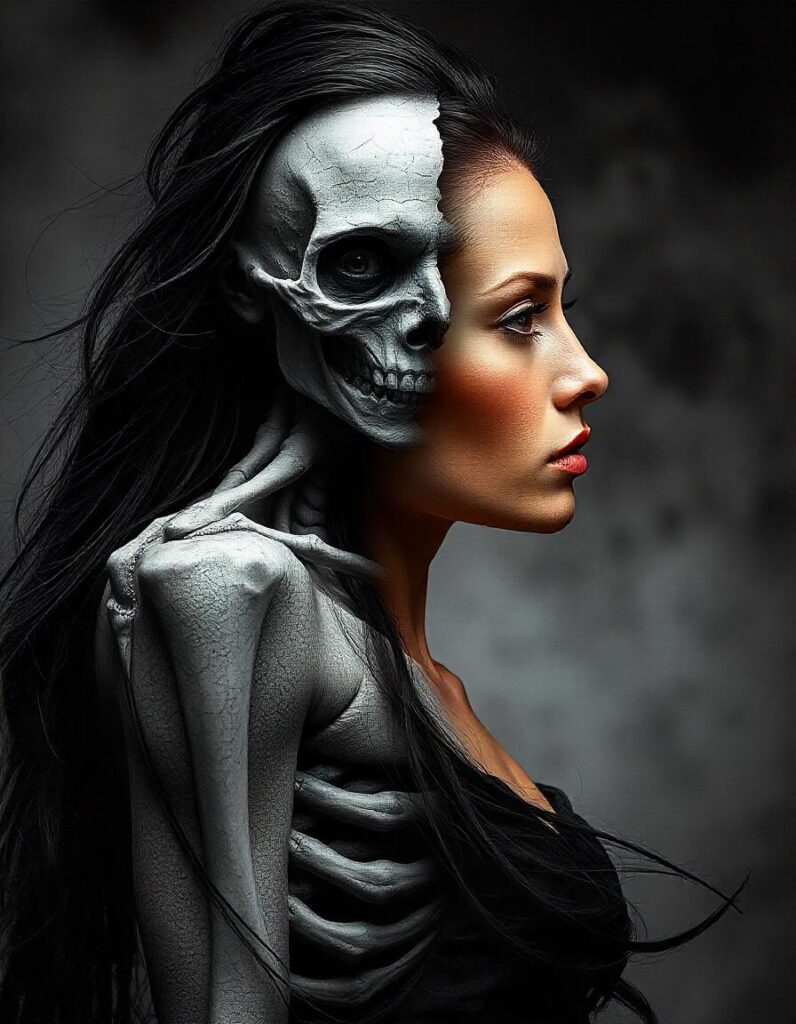
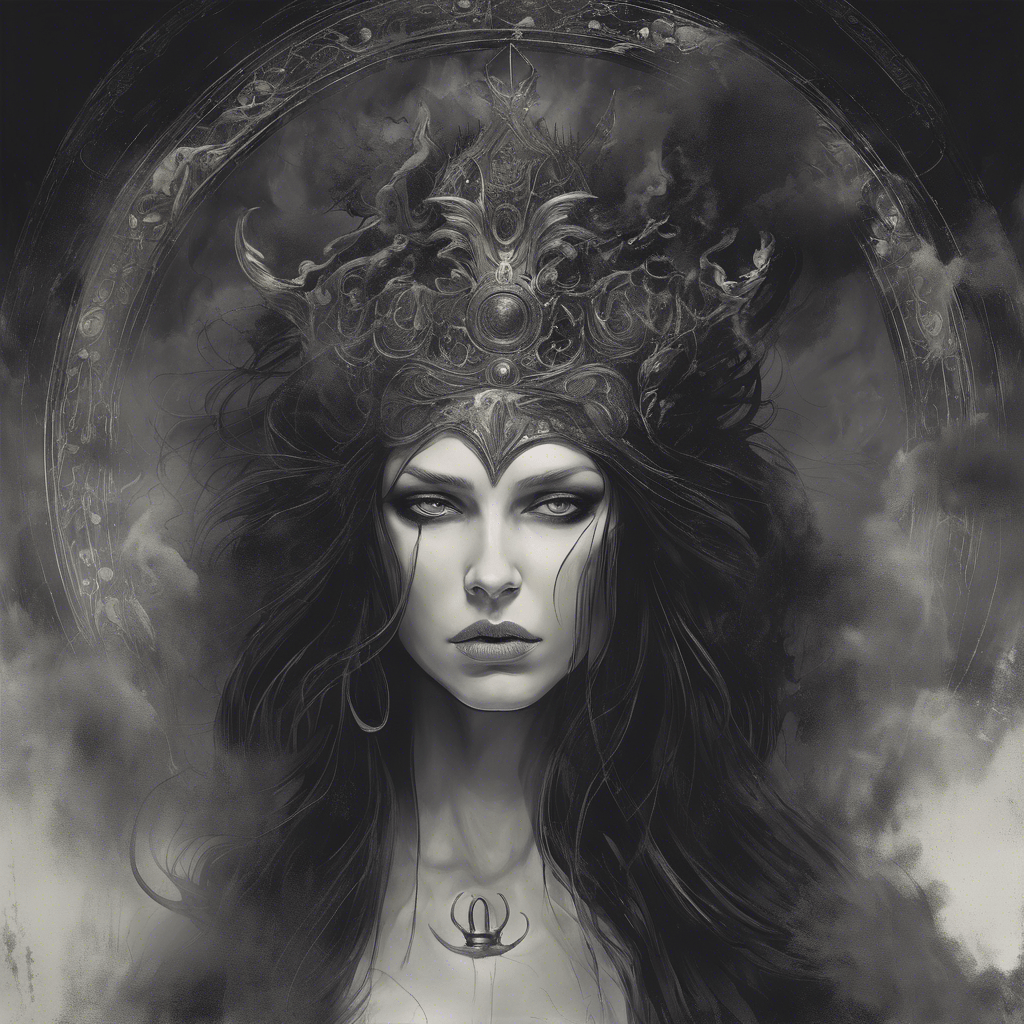
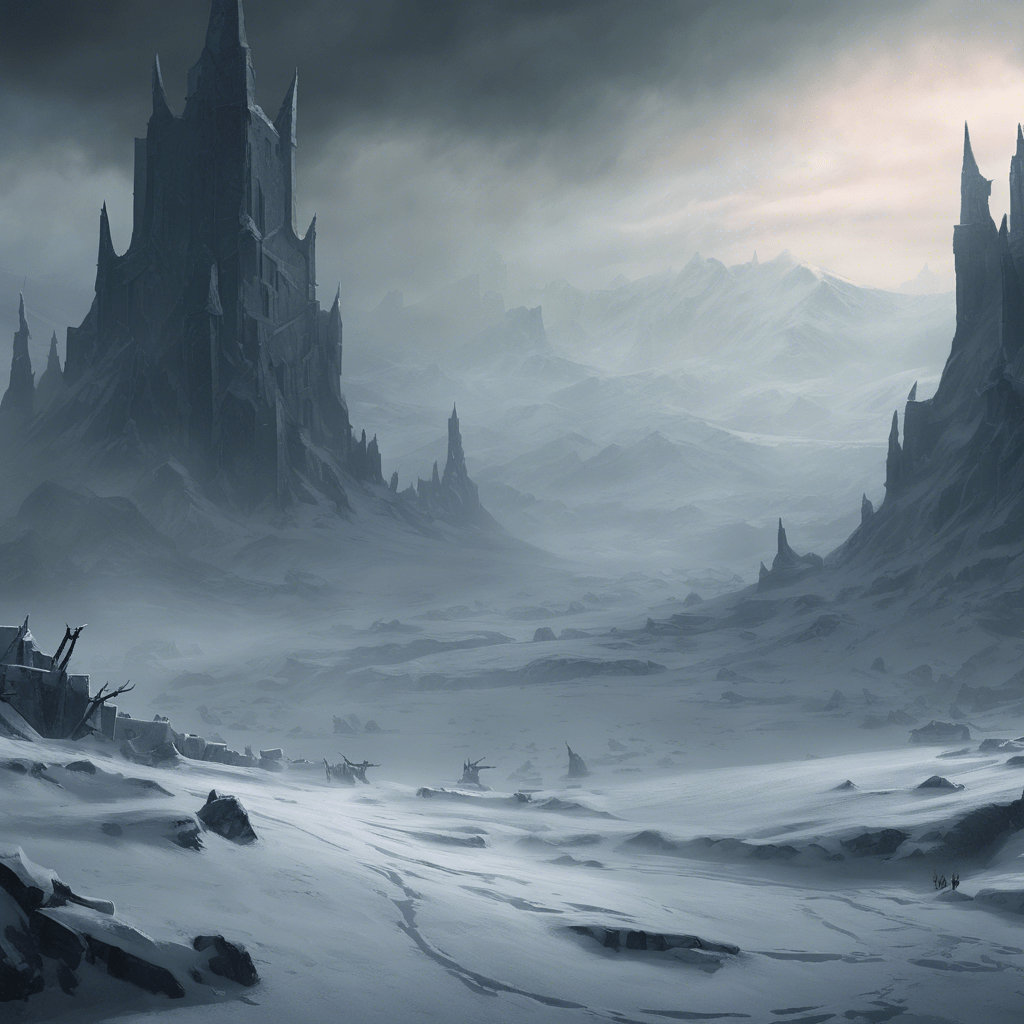
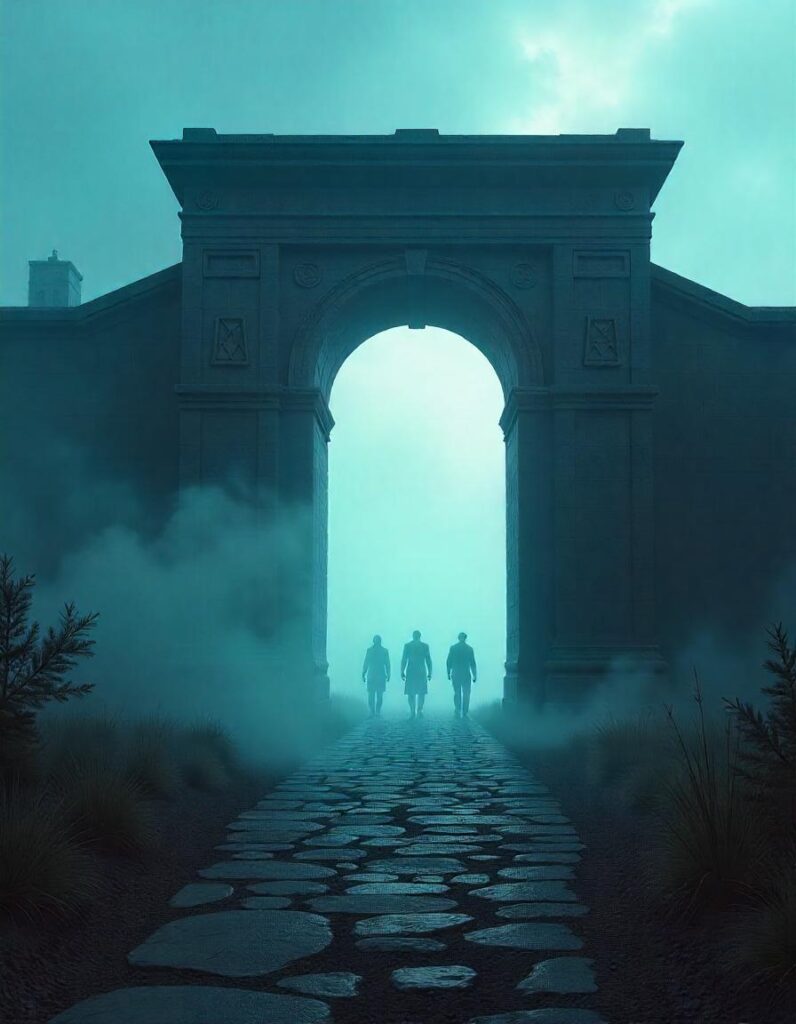
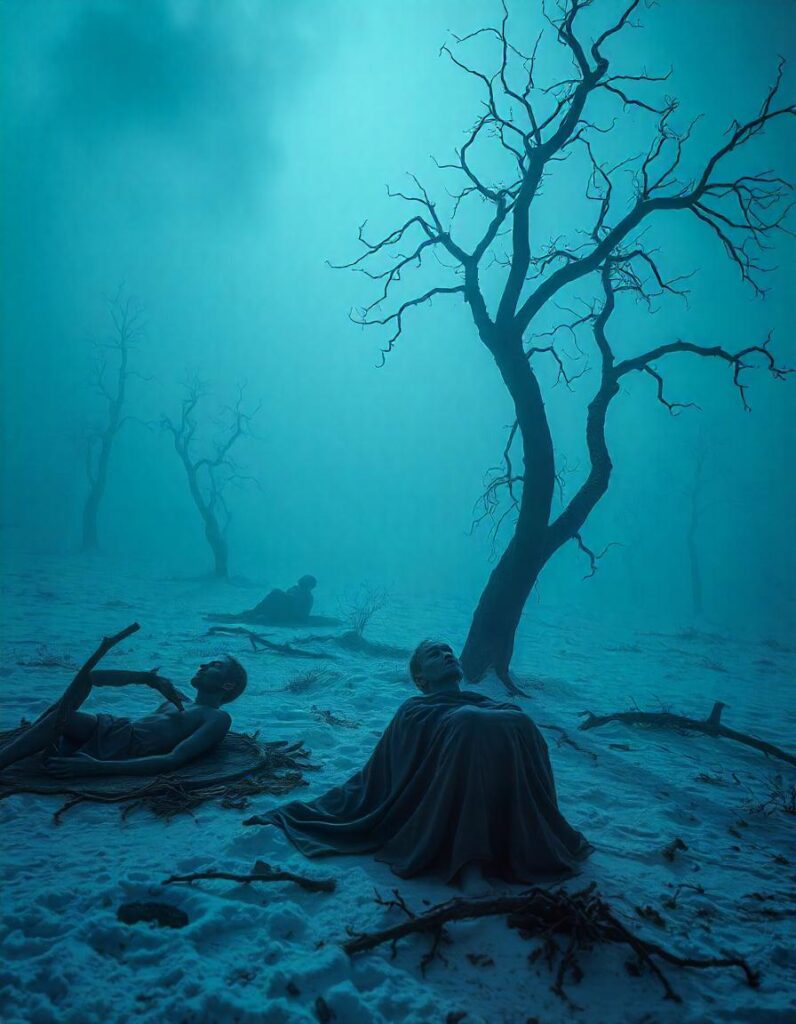
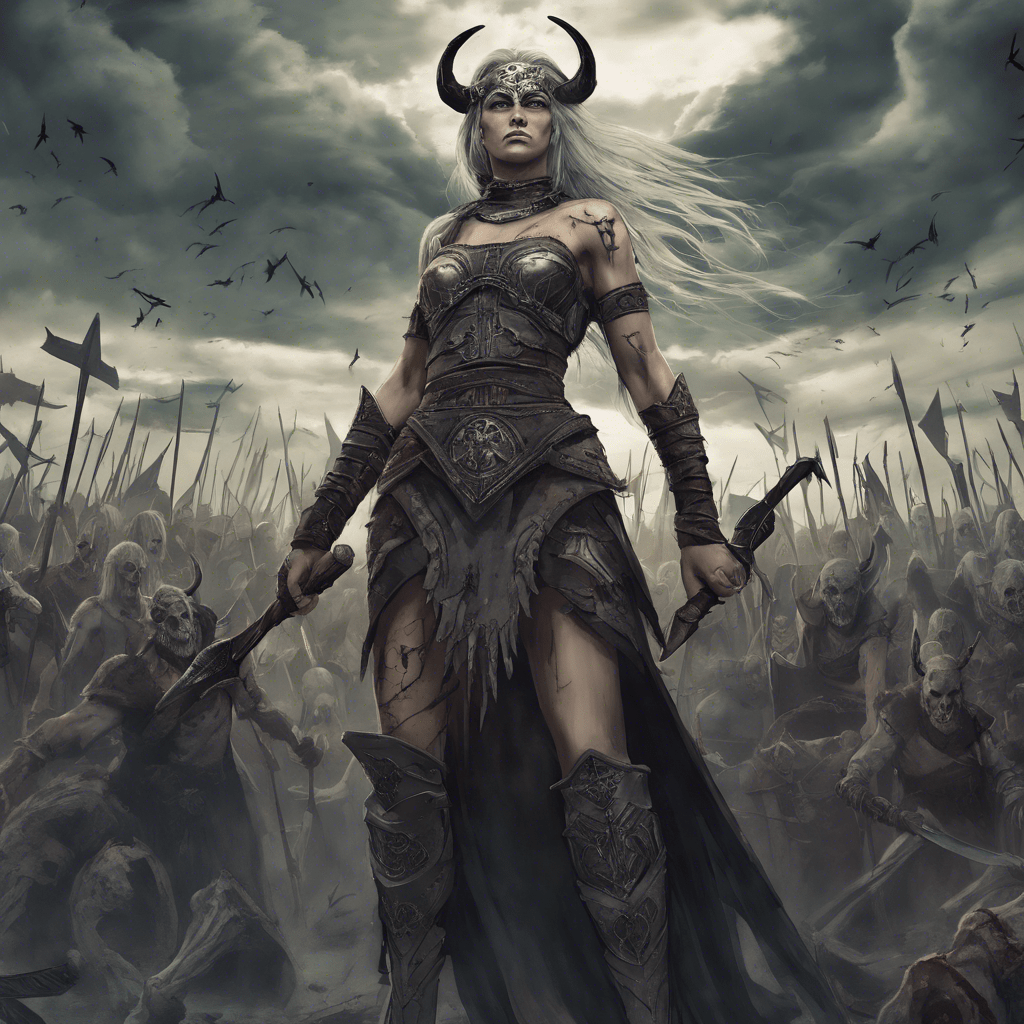
Hel’s Significance in Modern Culture
While Hel was once primarily seen as a dark and somewhat ominous figure, modern interpretations of Norse mythology have begun to highlight her as a symbol of acceptance of death and the natural cycles of existence. She represents the quiet, inevitable end that awaits everyone, but she also provides a sense of dignity to the dead. Her realm, while not one of joy, offers a place of rest, and she is a reminder that death is just another step in the endless flow of time.
Hel’s role in Norse mythology challenges the modern view of death as something to be feared or avoided, offering instead a perspective that sees death as a necessary part of life’s journey. Her influence can be seen in modern interpretations of Norse mythology in literature, films, and video games, where she is sometimes depicted as a powerful and sympathetic figure rather than simply a cold, unfeeling ruler.
Hel’s Legacy
Hel, as the goddess of the underworld, is a powerful and fascinating figure in Norse mythology. Her realm, Helheim, represents the peaceful yet uneventful afterlife for those who die of natural causes, highlighting the Norse belief that death is a natural transition rather than a feared event. Despite her fearsome appearance and her connection to Loki, Hel is not an evil goddess but rather an essential figure in maintaining the balance of life and death.
Her dual nature, combined with her role in the prophecy of Ragnarok, places her at the heart of the Norse worldview, where death is seen as neither an end nor a punishment, but as a vital and unavoidable part of existence. In this way, Hel’s legacy serves as a reminder of the cyclical nature of life and death, and her story continues to resonate today as a symbol of acceptance, balance, and the natural flow of time.



